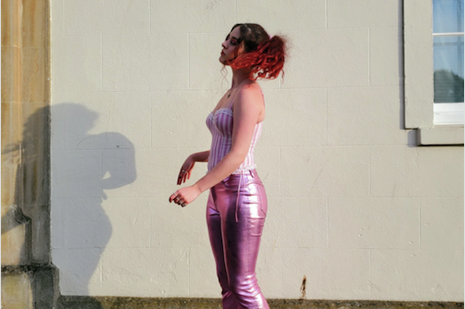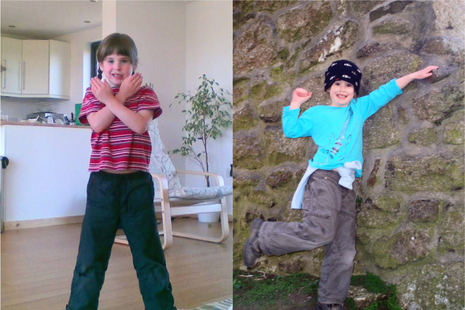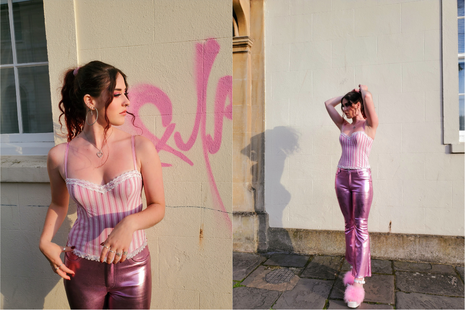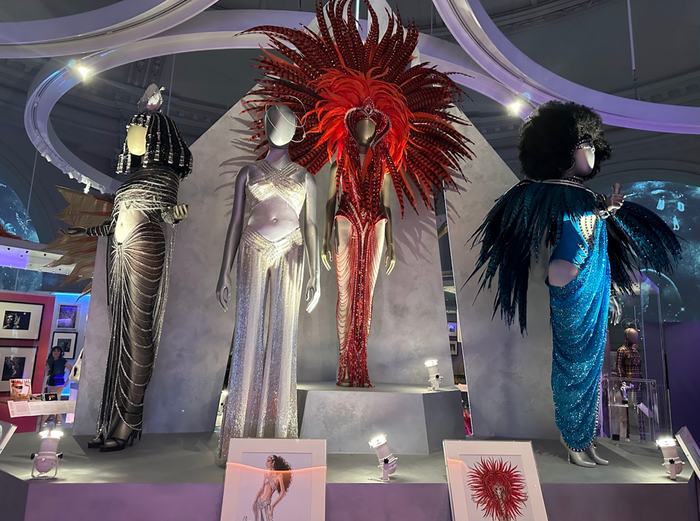From boyish to bimbo: dressing feminine as an ‘act of defiance’
Where I once defied socially expected feminity in my girlhood through tomboy clothes, I now defy the demonisation of feminity as shallow through my bimbo style

Anyone who met me at university would be surprised to learn that I was once a tomboy. Now twenty, I present myself in a very stereotypically feminine way. You could even describe parts of my style as ‘bimbo-core’. I love wearing makeup, pink, skirts, and dresses: anything you might call ‘pretty’. It is difficult to imagine me ever having dressed differently. But, from age four until the end of primary school, I exclusively wore ‘boys’ clothes. I adamantly refused to wear anything remotely ‘girly’: no skirts and dresses, frilly socks or T-bar shoes. I even wore boys’ underwear.
“I was a child before I was a girl, so why should I have to look pretty?”
It’s hard to know where this distaste for the stereotypically feminine came from. Maybe it was from having an older brother, whom I thought was the coolest person in the world and wanted to be just like. Half the things I wore were his hand-me-downs. But equally, I was infuriated that I was expected to like certain things, dress in a certain way, simply because I was a girl, and this anger morphed into a personal vendetta against the feminine. To me, bows and frills served the purpose of making you look pretty: I thought looking pretty was for grown-up women. I was a child before I was a girl, so why should I have to look pretty? For many children, the expectation of being a ‘girl’ and all that entails is forced upon you.

When I started to branch into more feminine clothing in my final year of primary school, it was partly because my personal tastes had changed, but also because I was tired of constant judgement from my peers. Standing out was exhausting, and I was sick of having to justify myself to my classmates: “do you want to be a boy?”, “why do you use the girls’ toilets?”. Entering secondary school brought about a new set of challenges. I didn’t have any particular affinity for fashion and generally followed the crowd. I had no confidence in myself and how I looked. I didn’t know how to look after my curly hair, I obscured my face with huge glasses and even refused to smile in photos when I had braces. I became afraid of colour, gravitating towards neutrals, greys, or black. Meanwhile, we were being exposed to damaging media stereotypes: the demonisation of femininity.

Those female characters who conformed to female stereotypes, who dressed in pink, wore makeup, dresses and skirts, accessorised, did their hair and nails, were too often presented as stupid, and self-obsessed. Those actually seen to take pleasure in these activities were the mean girls, rich, spoilt and no match for the quirky, unfashionable female lead. She wasn’t bothered by such shallow activities, she read books for God’s sake! TV and film depicted a dichotomy, a trade-off between being fashionable and attractive, or intelligent, interesting, and deep. (See the irony of the makeover that reveals she was pretty all along?). This false distinction taught young girls that you could not be interested in fashion and makeup and simultaneously have worth beyond this. It is unsurprising that so many develop internalised misogyny, desperate not to be like ‘other girls’. It also extends beyond the media and directly into the classroom. Girls in secondary schools are denied wearing jewellery, hair clips and makeup: they are ‘inappropriate’ and have no place in the classroom. School essentially taught us that expressing yourself through these means was at odds with your learning.
“Dressing as a bimbo is my personal act of defiance”
Reaching sixth-form represented liberation in many senses, particularly the absence of uniform. I began slowly incorporating colour back into my style. Starting with darker, less obtrusive shades I eventually filled my wardrobe with bright colours, even hot pink, which I could never imagine myself wearing. Fashion became a hobby, something I enjoyed. I grew to love butterflies and floral patterns, hearts, faux fur, diamantes – I diversified my jewellery, wore hair clips, headbands, and handbags. I started experimenting with creative makeup. Unfortunately, my choices didn’t go unchallenged by my school. I was once dress-coded (unaware we had a dress code) and told what I was wearing was “inappropriate”. I kindly asked how my outfit affected my learning; they simply insisted that chokers and hair clips and brightly coloured makeup were “not for the classroom”.
I ignored this blatant misogyny and continued dressing the way I enjoyed. Besides, I had a goal now: I dreamed of going to Cambridge. I knew the way I chose to present myself did not mean I was shallow or stupid. I have come to embrace the hyper-feminine style as an adult because I genuinely love it, rather than it being expected of me, as before. Dressing as a bimbo is my personal act of defiance against the false dichotomy created and imposed upon young girls. I love to put an outfit together with this in mind: how can I dress in such a way that people assume I must be stupid? My fashion and makeup is an outlet through which I express creativity. The way I dress is not inappropriate for learning, and certainly doesn’t come from a place of emptiness. It may seem obvious to conclude that a woman can care about her appearance without sacrificing her intelligence but these ideas are surprisingly deeply entrenched in society. We must stop forcing femininity on young girls, but we must also stop criticising older girls when they embrace aspects of femininity as a form of self-expression.
 News / Cambridge students set up encampment calling for Israel divestment6 May 2024
News / Cambridge students set up encampment calling for Israel divestment6 May 2024 News / Cambridge postgrad re-elected as City councillor4 May 2024
News / Cambridge postgrad re-elected as City councillor4 May 2024 News / Some supervisors’ effective pay rate £3 below living wage, new report finds5 May 2024
News / Some supervisors’ effective pay rate £3 below living wage, new report finds5 May 2024 Fashion / Class and closeted identities: how do fits fit into our cultures?6 May 2024
Fashion / Class and closeted identities: how do fits fit into our cultures?6 May 2024 News / Academics call for Cambridge to drop investigation into ‘race realist’ fellow2 May 2024
News / Academics call for Cambridge to drop investigation into ‘race realist’ fellow2 May 2024






